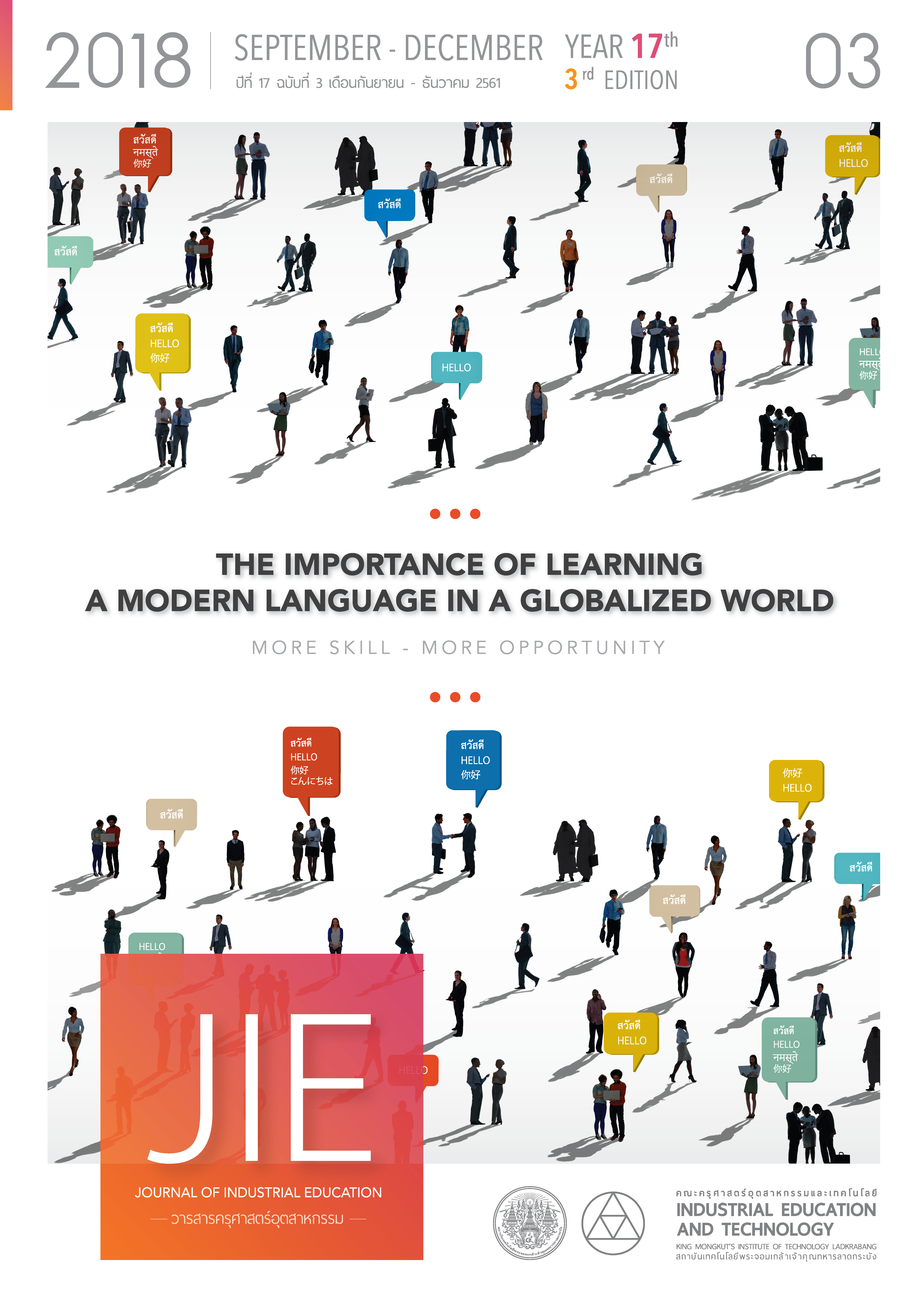KNOWLEDGE MANAGEMENT OF TEEN CHOK HANDCRAFTS OF LOCAL WISDOM ON THE ETHNIC LAO-KHRANG: CASE STUDY TEXTILES FABRICS GROUP WEAVE IN BAN BOR KRU DOEM BANG NANG BUAT DISTRICT SUPHAN BURI PROVINCE
Keywords:
knowledge management, handcraft, local wisdom, Teen Chok weaving, Lao-KhrangAbstract
The objective of this research was to study the knowledge management of Teen Chok handcrafts of local wisdom on the ethnic lao-khrang case study textiles fabrics group weave in Ban Bor Kru Doem Bang Nang Buat District Suphan Buri Province. The study was a qualitative research. There are 11 Informant. The research instruments were composed of interview form and observation from. The data analysis by studying document, interviewing, observation, analysis the data and check accuracy data with triangulation methods and informant check.
The result of the research showed the knowledge management of Teen Chok handcrafts of local wisdom on the ethnic Lao-Khrang case study textiles fabrics group weave in Ban Bor Kru Doem Bang Nang Buat District Suphan Buri province has 6 steps of knowledge management: 1) knowledge identification group was defined knowledge of the weaving techniques can explain identity of ethnic apparent. 2) knowledge acquisition was from study visit, training and seminar, by acquisition discussion group. 3) knowledge development for exchanged by group discussion and debate to be the ways of new development ideas. 4) knowledge exchange group has exchanged knowledge intentionally by transmission from family, relatives and leader or expert by demonstration step by step, and record observe and remember can be produced manually 5) knowledge retention is stored in document from and example woven in Lao-Khrang Ban Bor Kru cultural center. 6) knowledge utilization the group knowledge that was stored resuscitate.
References
[2] Kan Thongthiao Haeng Prathet Thai Changwat Suphan Buri. 2016. Prawat Khwam Pen Ma Changwat Suphan Buri. Retrieved November 28, 2016, from https://www.tatsuphan.net/Shistory.html.
[3] Butsaba Hinthao. 2014. Community Participatory Action Research for the Conservation Needs. Wisdom of Lao Khrang. Journal of Pa Ri Chat, 27(3), p. 138-139.
[4] Sathita Yadewa. 2010. Study on the development of products made from the weeds of the weaving mats. Ban Khao Mai Moo 4, Huai Pho Sub-district, Kuan Niang District Song Kra. Master Thesis Department of Local Administration, Khon Kaen University.
[5] Chintana Kanjanavisut and Wandee Sutthinarakorn. 2015. “Good Practice of Bandonkaidee Benjarong Community Enterprises in Kratumban District, Samutsakhon Province.” Journal of Industrial Education, 14(1), p. 171-177.
[6] Wararat Watchanobon, Phonphimon Sakda andPranom Phengtowong.2015. Weaving knowledge management Home of the occupational group Ban SukKasem Amphoe BangLen Changwat Nakhon Patha Mo. The Office of Research Promotion in Higher Education and National Research University Developmen, Rajamangala of Technology Rattanakosin University.
[7] Marquardt, M.J. 1996. Building the Learning Organizatio: A Systems Approach to Quantum Improvement and Global Success. New York: Mc Graw-Hill.
[8] Nonaka, I and H. Takeuchi. 1995. The knowledge-Creating Company: How Japanese Create the Dynamics of Innovation. New York: Oxford.
[9] RataNan Phongwirit andkanyakaen Saioso. 2014. Knowledge management of textile handicraft. Lanna ethnic knowledge Pago Gao tribe community in Mae Wang district Chiang Mai province. Journal of Humanities and Sociology, 7(2), p.29-30.
[10] Kanokphon Chimphli. 2012. Knowledge management model, local wisdom in textile machinery. Community Enterprise Case Study Nakhon Ratchasima. Ph.D. thesis Social Development and Environmental Management, National Institute of Development Administration.
Downloads
Published
How to Cite
Issue
Section
License
"The opinions and contents including the words in papers are responsibility by the authors."
"ข้อคิดเห็น เนื้อหา รวมทั้งการใช้ภาษาในบทความถือเป็นความรับผิดชอบของผู้เขียน"



